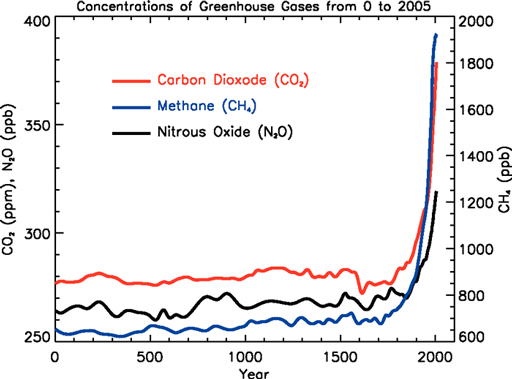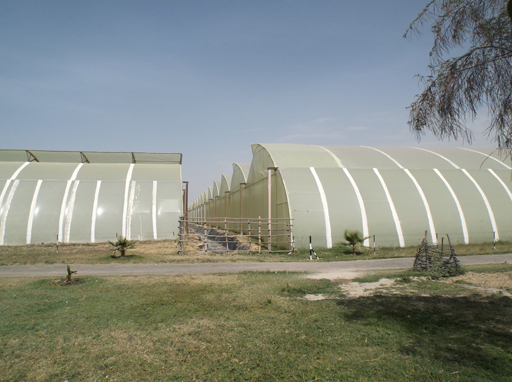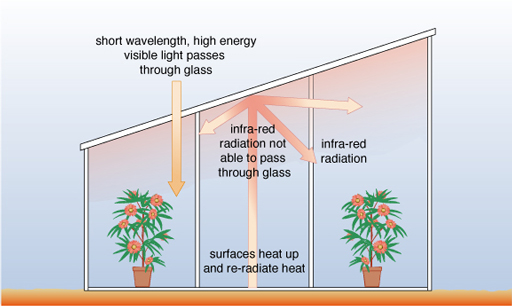9.3.2 How do greenhouse gases contribute to climate change?
Climate change has been accelerating in recent decades in part due to increasing emissions into the atmosphere of so-called greenhouse gases generated by a range of human activities. We will explain why they have been given this name in a moment, but first note from Figure 9.5 how the atmospheric concentration of the major greenhouse gases – carbon dioxide, methane and nitrous oxide – has changed over the past 2000 years. It remained constant until about 1750, but then began rising, with dramatic increases since about 1900. These recent increases are attributed to human industrial and domestic activity.

These gases have been called ‘greenhouse’ gases because they act like the glass or plastic sheeting in a greenhouse (see Figure 9.6). Sunlight has a short wavelength and high energy, which enables it to pass through the glass into the greenhouse. Sunlight energy heats the air, plants, soil and structures in the greenhouse, and some of this heat energy is radiated back towards the glass in the form of infra-red radiation. However, infra-red radiation has a long wavelength and low energy, which means it is not able to pass back out through the glass, so the radiated heat remains in the greenhouse causing it to heat up very quickly. This phenomenon increases the productivity of greenhouse crops because plants grow faster in the higher temperature.


A similar process happens at a global scale. Global warming is partly due to the effect of greenhouse gases in the atmosphere. Sunlight has enough energy to pass through these gases in the Earth’s atmosphere, so it reaches the Earth’s surface and transmits heat energy. Some of this heat energy is radiated back from the Earth’s surface into the atmosphere as lower-energy infra-red radiation. The greenhouse gases in the atmosphere absorb some of this infra-red radiation and reflect it back towards the Earth, causing the Earth’s temperature to heat up a bit more (Cunningham and Cunningham, 2006).
This greenhouse effect is a natural phenomenon. It is crucial for the survival of life on Earth because it maintains a global average temperature of about 15 °C. Without the greenhouse effect our global average temperature would be much colder: about –18 °C. However, human industrial and domestic activity since the start of the 20th century has released rapidly increasing amounts of greenhouse gases into the atmosphere. As a consequence, more sunlight energy is trapped close to the Earth because even less of the radiated heat can escape through the thicker shield of greenhouse gases surrounding the Earth.
9.3.1 Natural causes of climate change
